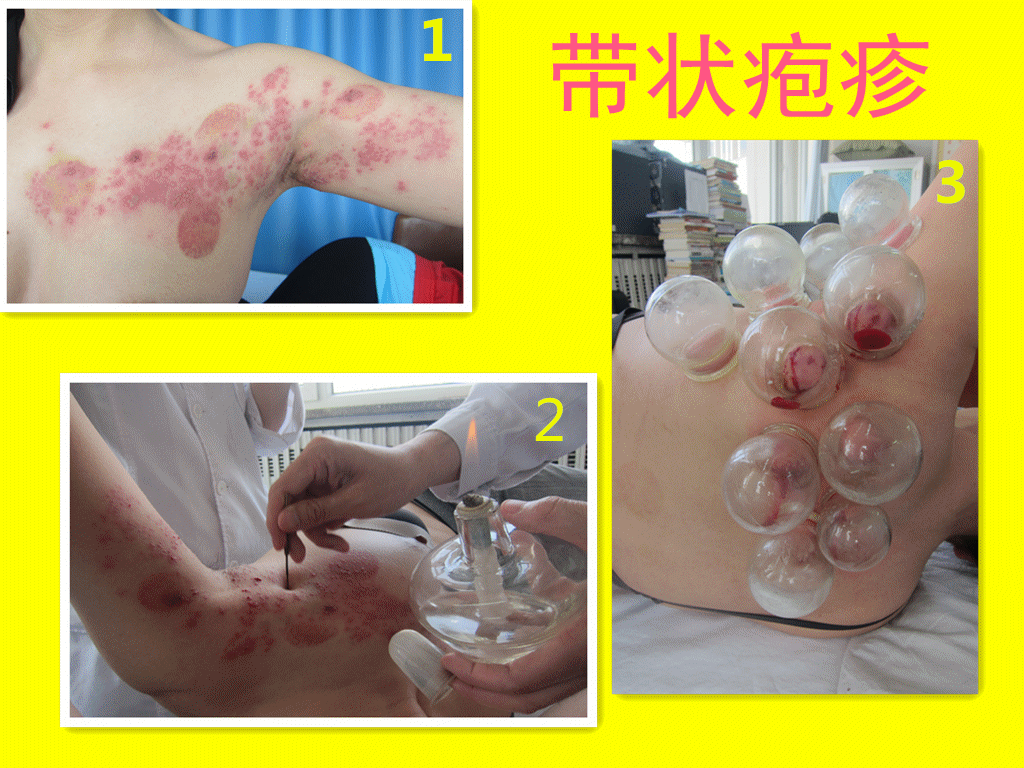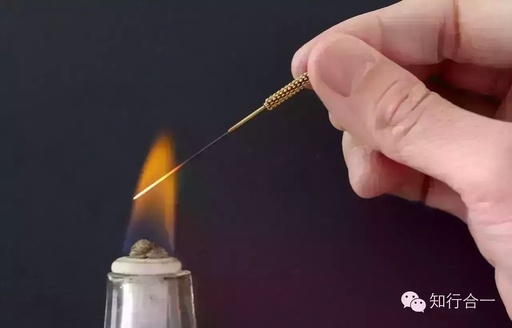Shingles
is an acute herpes skin disease caused by the varicella-zoster virus infection. It is characterized by clusters of red spots, blisters, or papules arranged in a band-like distribution along one side of the body, resembling a string of beads, and causing intense pain. The rash typically presents unilaterally and follows the distribution of nerve segments, with local stabbing pain or lymphadenopathy, and rarely recurs after healing. The older the patient, the more severe the neuralgia. This condition is more common in adults and is frequently seen in the spring and autumn.
In Traditional Chinese Medicine (TCM), it is referred to as “she chuan chuan” (蛇串疮), “chan yao huo dan” (缠腰火丹), “huo dai chuan” (火带疮), and “she dan” (蛇丹).

Characteristics
Clusters of blisters appear in a band-like distribution along one side of the body, accompanied by severe pain. Prior to the onset, there may be a sensation of stabbing pain, followed by the appearance of blisters a few days later, or pain and blisters may occur simultaneously, or blisters may appear first followed by pain. The blisters are grouped in threes to fives, arranged in a band, with normal skin color between the groups, and the affected area experiences stabbing and burning pain. Shingles commonly occurs in the thoracic intercostal nerves and the distribution area of the trigeminal nerve in the face. According to clinical experience, this condition has a “hemispheric” characteristic: skin lesions and blisters predominantly appear on one side of the body; the tongue coating may be absent or sparse on one side; often, there is no sweating on the affected side; and pain tends to be milder during the day and more severe at night.


Diseases Easily Confused

Contact Dermatitis
Has a history of contact, the rash is unrelated to nerve distribution, with burning sensation, severe itching, and no neuralgia.
Herpes Simplex
Usually distributed at the junction of skin and mucous membranes, unrelated to peripheral nerve distribution, prone to recurrence, with mild pain, occurring in the prodromal phase of shingles and in cases of zoster sine herpete.
 Herpes Simplex
Herpes Simplex

Course and Prognosis
Generally, the virus can remain dormant in the human body for a long time without symptoms. However, it can be triggered by infections, fever, trauma, tumors, etc. The course of the disease lasts about 2-3 weeks for children and young adults, and about 3-4 weeks for the elderly, with very few recurrences after healing. Severe cases, especially those with widespread rashes, often indicate immune dysfunction and potential malignancy, requiring early examination.
The prognosis of shingles is related to the uniformity of the rash and whether the blister fluid contains blood. Uneven rashes or those with blood, or late scabbing, are more likely to leave atrophic scars; if the blister fluid is turbid or the blisters appear slowly, there is a higher risk of postherpetic neuralgia.
Fire Needle Therapy
This condition is often due to multiple factors such as liver qi stagnation, heat accumulation from prolonged stagnation, or due to irregular diet leading to spleen dysfunction, damp-heat accumulation, and invasion of toxic pathogens. Dr. Li Yan, a physician in the Physical Therapy Department of Tianjin Public Security Hospital, a disciple of Professor He Purin, the first National Master of Traditional Chinese Medicine, inherits and develops the academic thoughts of Professor He, adhering to the theory of “internal adjustment and external treatment,” applying fire needle therapy, cupping, and internal herbal medicine to treat shingles. Fire needle therapy for shingles uses fire to attack toxins, drawing out pathogens, achieving the effects of invigorating blood circulation, resolving stasis, unblocking meridians, and clearing heat and dampness, thus alleviating the rash and stopping the pain.


Precautions
-
During treatment, keep the affected area clean, allow scabs to fall off naturally, and avoid scratching;
-
Avoid overexertion, alcohol consumption, and mental stress;
-
Ensure adequate sleep, maintain a positive mood, and adopt a healthy lifestyle.
-
Enhance nutrition with a balanced diet, rich in high-protein foods, fresh fruits, and vegetables, while avoiding spicy, stimulating foods, cold drinks, ice cream, and alcohol.
-
Shingles has a certain degree ofinfectiousness, so timely isolation from family members is necessary; maintain personal hygiene and avoid sharing cleaning items to prevent cross-infection.
-
Strengthen the body and improve antiviral capacity.
Address: 78 Nanjing Road, Heping District, Tianjin (6th Floor, Acupuncture and Physical Therapy Department of Public Security Hospital)
Consultation Phone:022-23142735
WeChat QR code for the Acupuncture and Physical Therapy Department of Tianjin Public Security Hospital:




